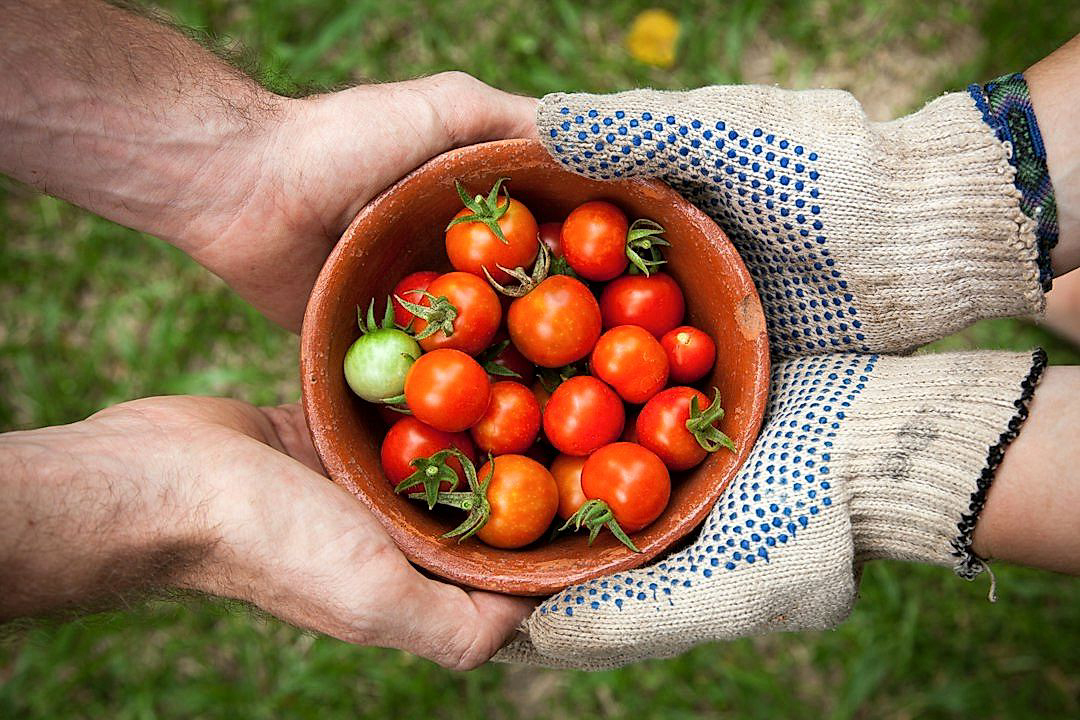As produce retailers, controlling expenditures while maintaining steady product availability is a constant balancing act.
In the face of fluctuating market conditions and ever-higher consumer demands, how do we combat escalating costs to keep businesses profitable?
The solution lies in resourceful, cost-effective sourcing strategies.
This article will delve into the varied tactics retailers can employ to ensure a dependable supply chain without incurring excessive costs.
Through this comprehensive guide, we aim to furnish you with valuable insights and potential paths to affordable procurement.
By revamping sourcing methods, businesses can increase sustainability while also meeting customers’ expectations for fresh, high-quality produce.
Cost-effective Sourcing Strategies For Produce Retailers
1. Establish Direct Connections with Local Farmers
The first strategic approach to cost-effective sourcing in produce retail is to establish direct connections with local farmers.
It’s simple economics – cutting out unnecessary stages in the supply chain reduces your overall operational costs.
When grocery stores buy produce directly from local farms, they bypass the financial markup that happens when goods exchange hands through various intermediaries.
It enhances the freshness of the produce, which is a significant selling point to customers who prioritize quality in their food choices.
Not only does this sourcing method cut down on costs, but it also has the potential to bolster the local economy, indirectly increasing the customer base.
By buying straight from the farmer, retailers can negotiate prices based on their bulk orders, ensuring a fair price for both parties involved.
Moreover, establishing a business relationship with local farmers creates the opportunity for reliable, consistent sources of fresh, high-quality produce.
This direct sourcing strategy also minimizes the potential risks associated with global supply chains, such as unpredictable weather, geopolitical issues, or unexpected global health crises.
It removes the layers of complexity and potential for miscommunication that are inherent in longer, international supply chains.
Additionally, sourcing directly from farmers also gives retailers more control over the products they source, enabling them to demand specific farming practices, like sustainable or organic farming methods.
By publicizing their choice to source directly from local farmers, retailers can attract socially and environmentally conscious consumers to their stores.
In essence, the strategy of building direct connections with local farmers is beneficial for cost management, risk reduction, customer attraction, and customer retention.
When implemented properly, it can definitely be a win-win situation for both the retailer and the farmer.
This strategy also enables the retailer to actively participate in and contribute to the local food system, thus aligning with the model of a community-focused business.
This shows that establishing direct connections with local farmers is not purely about cost-effective sourcing, but is also about building relationships, supporting local communities, and driving sustainable practices.
Therefore, developing close relationships with local farmers, understanding their offerings and practices, and negotiating mutually beneficial agreements should be at the forefront of any cost-effective sourcing strategy.
2. Implement seasonal sourcing for cost efficiency.
Seasonal sourcing signifies the practice of buying and selling produce that are in abundance due to a particular season.
It is an integral part of the produce retail business’s supply chain management.
Bringing into play seasonal sourcing can be a splendid technique to shrink sourcing expenditure and enhance cost-effectiveness.
By aligning your procurement schedule with the agricultural calendar, you can take advantage of lower prices resulting from abundant yields.
As the availability of a specific produce amplifies during its harvest season, this leads to a lower unit cost.
More so, you are likely to get better deals, thereby significantly reducing procurement expenses.
Adequate planning and sourcing estimations enable retailers to purchase just the quantity they need, thus avoiding unwanted inventory build-up.
When a produce is in its prime season, it not only is abundant and affordable but also at its peak quality.
By sourcing produce that is in season, produce retailers can sell fresher, tastier, and more nutritious commodities, meeting consumers’ growing demand for high-quality produce.
Therefore, seasonal sourcing aids in enhancing the retailer’s brand image of selling top-quality produce, thus boosting customer satisfaction and maintaining customer loyalty.
In addition to the monetary benefits, seasonal sourcing has a vital role to play in sustainability.
The practice supports local farmers and economies and lessens the carbon footprint resulting from the transportation of produce over long distances.
Keep in mind, however, that opting for seasonal sourcing requires true knowledge of agricultural cycles and an understanding of what produce is in season at what time of the year.
It also calls for a flexible business model that can adapt to the changing availability of produce.
To conclude, seasonal sourcing can significantly contribute towards attaining cost-effectiveness, making it an indispensable strategy for produce retailers.
3. Leverage Technology for Inventory Management
As a produce retailer, leveraging technology in inventory management can significantly enhance cost efficiency.
Not only does it minimise the waste from oversupply or under supply of produce; it also improves the agility and responsiveness of sourcing decisions.
The key to effective inventory management in produce retailing lies in the accurate, real-time understanding of supply and demand dynamics.
Advanced inventory management systems provide this insight, through their capacity to continuously track and analyse data on purchase patterns, supplier performances, seasonal factors, and other pertinent trends.
By utilising this technology, retailers can optimise the timing and quantity of their produce orders, ensuring that they meet consumer demand without tying up too much capital in unsold inventory.
Another key feature of these systems is their ability to automatically reorder supplies based on pre-set parameters, thus saving considerable time and effort that would otherwise be spent on manual data entry and order processing.
Incorporating technology not only streamlines the inventory management process but also reduces costs associated with overstocking or understocking.
Furthermore, this technology can integrate with other systems in the business, such as billing and customer relationship management, leading to improvements in overall operational efficiency.
This integration can further enable produce retailers to effectively track and manage product wastage, one of the major cost drivers in this industry.
By using technology to monitor and manage degradation and shrinkage, retailers can dramatically reduce wastage costs, thus further enhancing their bottom line.
However, to successfully leverage technology for inventory management, produce retailers need to invest not only in the software itself but also in the necessary training and skill development for their staff to effectively use these systems.
This investment, while potentially significant upfront, can yield considerable long-term cost savings and increased profitability.
Moreover, the data gleaned from advanced inventory management systems can be leveraged to inform strategic sourcing decisions.
This could involve identifying and targeting suppliers who offer the best combination of price and quality, based on past performance data.
Coupled with other cost-effective sourcing strategies like direct farming connections, seasonal sourcing, bulk purchasing, and cooperative purchasing, leveraging technology for inventory management can undoubtedly be an extensive pillar in enhancing overall cost-efficiency in produce retail.
4. Invest in Bulk Purchasing for Discounts
One beneficial strategy for cost-efficient sourcing in produce retail involves investing in bulk purchasing for discounts.
By purchasing large quantities, retailers can obtain a significantly lower unit price, also known as the bulk price discount.
When implemented correctly, this angle can yield substantial savings and increase a business’s profit margins.
Consider the undeniable advantage of obtaining products at a lower unit price through bulk buying – it can positively influence business profitability.
This strategy, however, necessitates a detailed understanding of demand patterns to ensure the produce does not go to waste owing to spoilage.
Incorporating bulk purchasing into your sourcing strategy demands a high level of inventory management proficiency and sophisticated tools to predict demand accurately.
Even as you aim to benefit from the financial perks of bulk purchases, it is vital not to ignore the importance of quality.
The tempting and lower price tags attached to bulk goods should not compromise the quality of fare that reaches the buyers.
Essentially, the bulk purchasing strategy should incorporate an ideal balance between quantity, quality, and costs.
Successful execution of this sourcing method necessitates negotiation skills to secure the best possible terms for your purchases.
Often, being able to influence the outcome of a negotiation will depend on your understanding of your supplier’s business, flexibility, and transparency in discussions.
In some cases, the length of the relationship with the supplier can be a significant factor in securing better prices for bulk purchases.
Also, consider joining a purchasing cooperative to further bolster your bulk purchasing power.
Working within cooperatives can help smaller businesses compete with larger ones, allowing them to negotiate similar discounts.
The success of the bulk purchase strategy largely hinges on your capacity to manage inventory effectively, negotiate favorable terms, and maintain quality despite the quantity.
In the end, bulk buying, as a sourcing strategy, is about more than just securing lower prices; it is a way to build stronger relationships with suppliers, manage resources more efficiently, and ultimately, increase profitability.
5. Use Cooperative Purchasing to Reduce Costs
The world of business is dynamic and ever-changing, requiring business owners to implement innovative strategies to remain competitive economically.
For produce retailers, one such cost-effective sourcing strategy is cooperative purchasing.
Also known as group buying, cooperative purchasing revolves around businesses coming together to leverage their collective buying power to snag discounts and better pricing from suppliers.
This can prove to be an invaluable tool in reducing sourcing costs, therefore bolstering the company’s profits.
Cooperative purchasing revolves around businesses coming together to leverage their collective buying power to snag discounts and better pricing from suppliers.
As a produce retailer, engaging in cooperative purchasing means you can make bulk orders alongside other businesses, therefore reducing the overall cost.
Through this approach, retailers can negate the high pricing of sourcing produce in smaller quantities.
Besides this, the cooperative purchasing model also provides a platform for positive networking with like-minded businesses.
Engaging with fellow retailers can ignite the exchange of valuable business ideas and strategies, setting your business up for better future prospects.
Furthermore, cooperative purchasing can also garner a stronger negotiation table when dealing with suppliers.
A pool of buyers has more influence over the pricing and terms of purchase than a single entity.
This often results in better purchase terms that can significantly reduce sourcing costs.
Investing in cooperative purchasing also opens up the possibility to access a wider range of products from varied suppliers without necessarily bearing the extra costs associated with it.
You become part of a larger network that has greater reach to varied suppliers, and this variety brings firm negotiation power and better options.
However, while cooperative purchasing is advantageous, caution should be taken to ensure the quality of produce is not compromised in an attempt to reduce costs.
In conclusion, for produce retailers looking to trim sourcing costs without compromising on the quality, venturing into cooperative purchasing might just be the tailored solution.
The Bottom Line
By integrating local farmers into supply chains, businesses can have access to fresher, sustainable produce while also supporting their immediate communities.
Adopting seasonal sourcing strategies not only encourages diversity in product offerings but also significantly mitigates costs.
In addition to these approaches, harnessing modern technology can streamline inventory management which can considerably cut overhead expenses and reduce food waste.
On a similar note, embracing bulk purchasing can unlock substantial discounts and save on packaging.
Lastly, embarking on cooperative purchasing models teams up businesses with similar needs, leading to a shared reduction in acquisition costs.
Ultimately, these strategies promise both sustainability and cost-efficiency – all key to thriving in the increasingly competitive food industry.




